West Bengal Elections: Marooned villages, cracked fields, saline water… The Sundarbans is a hot potato during elections
Every time a cyclone hits the Sundarbans, the lives of those living there are torn asunder. Embankments breach and people repeatedly get displaced. When the area votes today as part of the West Bengal elections, these issues will be a potent trigger.

Uttar Gopalnagar, Sundarbans, West Bengal
An unusual, death-like quiet surrounds Uttar Gopalnagar village in South 24 Parganas. The farmlands are barren, and the grass has already turned stiff and dark. The soil that once supported lush fields has developed deep cracks. Mud houses once throbbing with life, and from where lullabies could be heard stand in their skeletal state.
Explained: The importance of Nandigram, why is CM Mamata Banerjee contesting from this seat?
The silence is broken by Kunti Das, a 70-year-old widow who blames the administration for the village’s miseries. “There was a time when the entire village reverberated with the sound of children playing outside mud homes. Only thirty or thirty five homes remain. The rest have been engulfed by the river,” she told Gaon Connection.
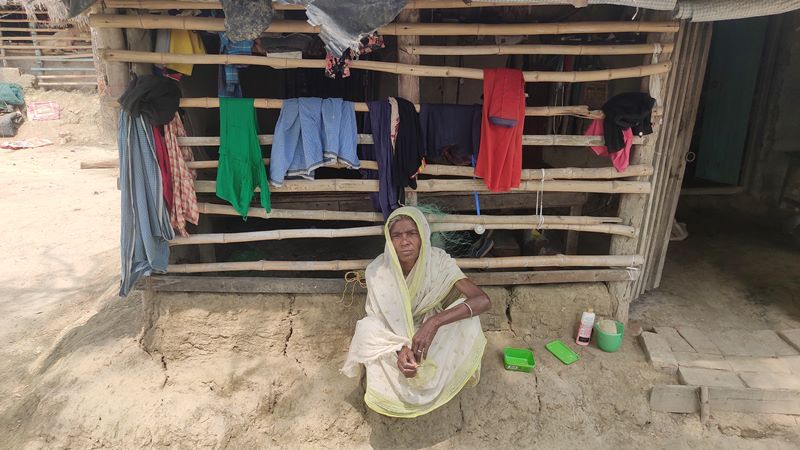
Kunti’s Uttar Gopalnagar village, with 540 voters, falls in Patharpratima constituency in the Indian Sundarbans, which casts its vote today, in the second of the eight-phase West Bengal assembly elections. The ruling Trinamool Congress (TMC) takes on the Bharatiya Janata Party (BJP) in this fiercely-contested election.
When residents of this village, hit by successive natural disasters and cyclones, vote today, their rehabilitation will be on top of everyone’s minds, the residents say.
Kunti claimed that at least five embankments were swept away by the river due to a series of cyclones that hit the Sundarbans — Aila (2009), Bulbul (2019) and Amphan (2020). “The government is building concrete and cinder block embankments this time. We still doubt how long they will last,” Kunti said.

The Amphan super cyclone, which hit the Sundarbans last May, and the resultant relief work have already become a political hot potato among the two major political parties, with both the Trinamool and the BJP blaming the other.
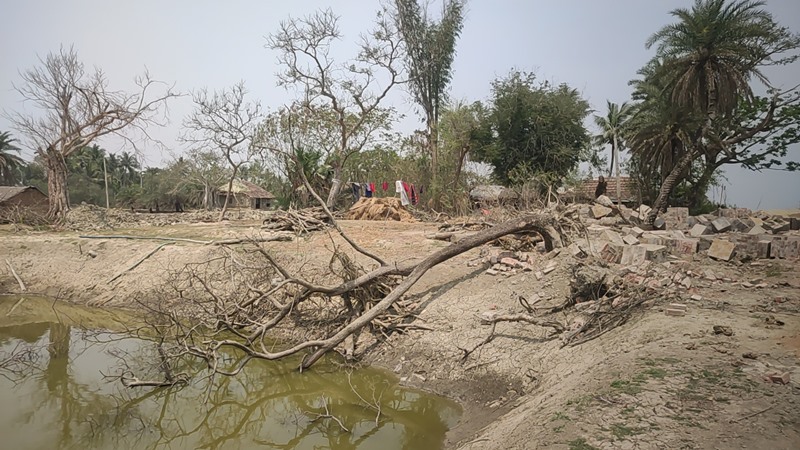
Also Read: At least 72 dead as Cyclone Amphan tears into Sundarbans and West Bengal
On March 23, Union Home Minister Amit Shah addressed a rally at Gosaba in the Sundarbans and accused the ruling party of siphoning off Amphan relief funds sent by the Centre. His main target was Abhishek Banerjee, Chief Minister Mamata Banerjee’s nephew and TMC MP from Diamond Harbour.
The ruling party termed the allegations as baseless. “The state government has worked with complete transparency while distributing funds to those affected by the super cyclone. The opposition is trying to malign the image of the ruling party. Our party has worked for all, irrespective of political affiliation,” Manturam Pakhira, minister of state in charge of the Sundarbans, told Gaon Connection.
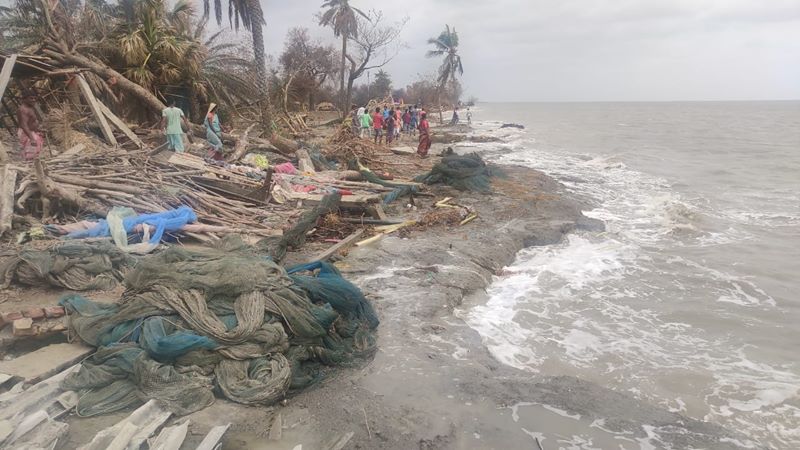
Uprooted repeatedly
Spread across an area of 40,000 square kilometres in India and Bangladesh, the Sundarbans is home to over four million people and is known for its vast mangrove cover and 96 Royal Bengal tigers (census 2019-20). Around 54 of the total 102 islands have human settlements.
Also Read: Who moved my village?
It’s going to be a year now, but Tapas Das still remembers every painful detail of how tidal waves of the river Gobodiya almost drowned him and 14 others during Amphan. It barrelled into the Bay of Bengal with a wind speed of 260 kilometres per hour, causing massive destruction to life and property on May 20 last year.
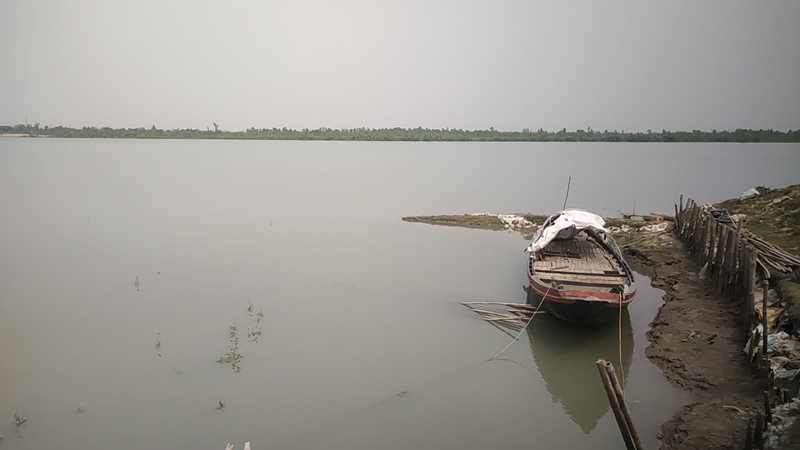
“We were sitting on a muddy embankment close to the river when a monster wave swept us away. Luckily, all of us knew to swim, and survived. But it was scary,” Tapas, who does odd jobs for a living, recalled to Gaon Connection.
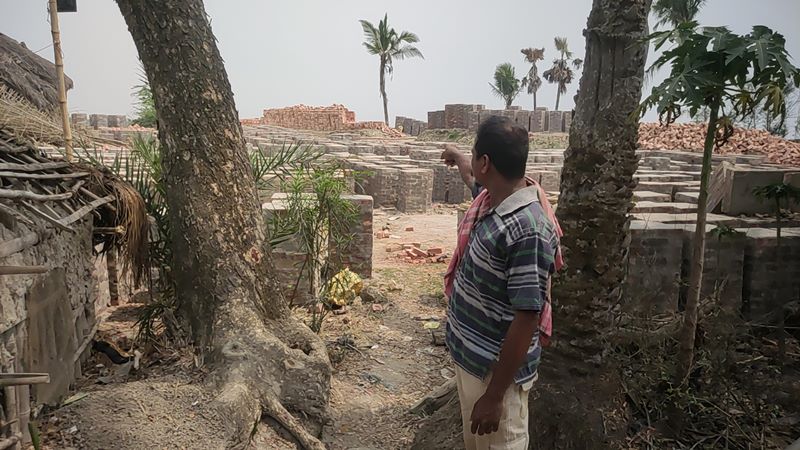
Now, a similar embankment made of cement and block, which is supposed to save the village from nature’s fury, threatens Tapas’ house. His house is near the river and faces demolition due to the embankment. And while politicians have come by after the cyclone nudging people to accept a compensation of Rs 20,000, 46-year-old Tapas awaits a better rehabilitation package from the government.
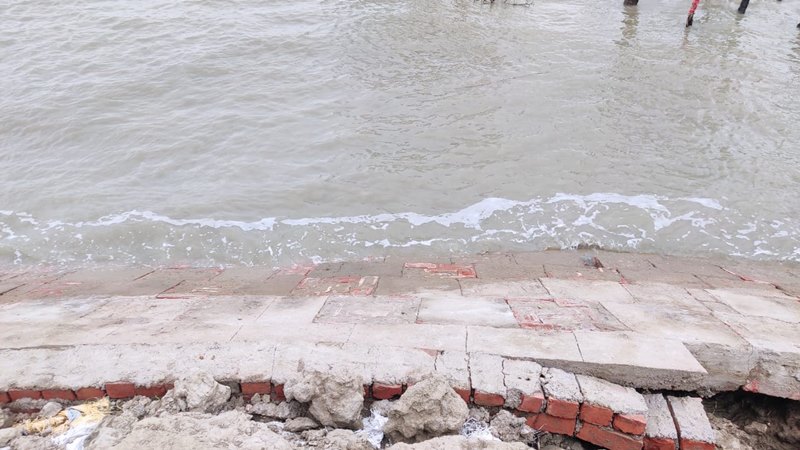
The embankment will devour the land on which my house stands, but the administration is yet to decide on the rehabilitation package, Tapas claimed. “Five of my relatives have already lost their houses to the river during Amphan. What can they do with the twenty thousand rupees being offered as compensation? It’s like laughing at our poverty,” he says, emotions running high on his face.
Also Read: Cyclone Amphan: Those left behind in Sundarbans have nothing to rebuild their lives with

“We have relocated at least five times in the past ten years as soil erosion swept away our mud houses. It’s a waste of money to build toilets and bathrooms when we don’t even know how long the house will last,” 45-year-old Chobi Das, Tapan’s wife, told Gaon Connection. “I have two grown-up daughters who also have to relieve themselves in the open. It’s dangerous.,”.

Chobi blamed the apathetic attitude of the government for their plight. “It has been twelve years since Aila struck and we lost our houses. The government has remained indifferent to our plight, and no action was taken to build a concrete embankment. If it had, Amphan would not have destroyed our lives the way it did.”
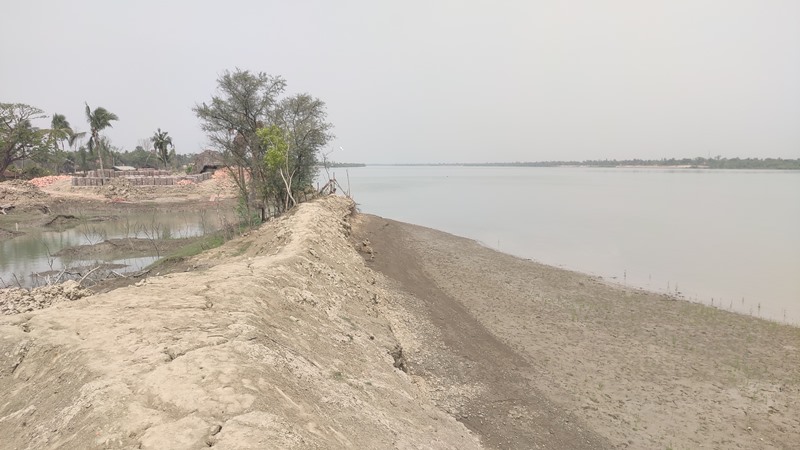
Ruined livelihoods
Following the deadly Cyclone Aila, the World Bank allocated Rs 5,032 crore to the Sundarbans Embankment Reconstruction Project to build ‘modern’ cement and block embankments that are around five metres high and 30-40 metres wide.
Kunti’s suspicion of the embankments’ longevity is not without reason. Many natives of the Sundarbans accuse the government of shoddy work, because most of these embankments gave way during Amphan — salt water ingressed fields and destroyed standing crops.
Breaching embankments result in loss of livelihood. Uttar Gopalnagar’s farmers are mostly women — the men have migrated to other states for livelihood.
The region follows mono cropping. Farmers raise rain-fed paddy and grow vegetables for personal consumption across the year.
Also Read: Power supply restored, but Cyclone Amphan has wiped off all livelihoods in the Sundarbans
Forty five-year-old-farmer Anushree Das told Gaon Connection that 75 per cent of her nine bigha (1.2 hectares) land has already been lost to river erosion. The rest has been rendered uncultivable due to the ingress of salty water after the collapse of the mud embankment.
“Water entered our fields, turned the soil salty and useless for farming and fishing, rendering us near-paupers,” Anushree said.
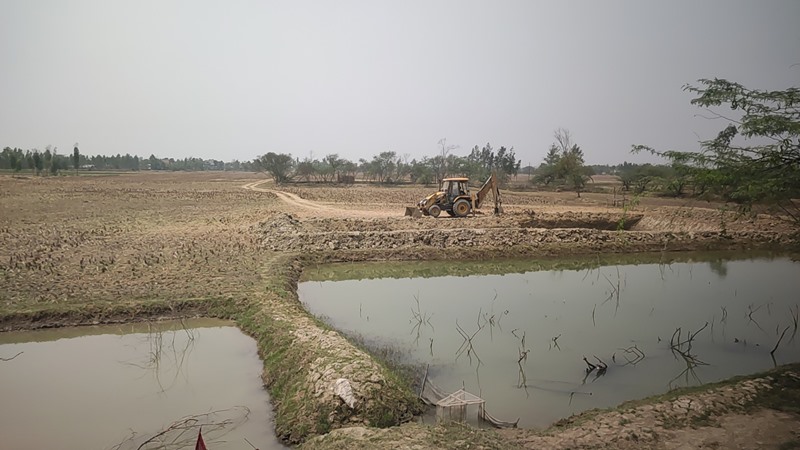
Thirty-year-old farmer Archana Das said the salt water has hampered soil productivity. “Earlier, we cultivated paddy in five bighas [0.6 hectares] of land and harvested five paddy bags of fifty five kilos each from each bigha. Now, I just get ten bags from the total land. It is very difficult to run my family,” added Archana, whose family comprises her mother-in-law, husband and two minor sons.
“My husband does odd jobs for survival. I am unable to find employment as a maid, as people are afraid to let me in due to corona-related fears,” Archana told Gaon Connection.
Also Read: The vulnerable fishermen and the ‘tiger widows’ of Sundarbans
Lack of potable water
Drinking water continues to pose a problem too. “We have to depend on tube well water for cooking and bathing. A non-profit recently built a tube-well in the village after Amphan. Before that, we had to walk at least two to three kilometres to find drinking water. But, one tube well is not enough for our village. We are dependent on saline pond water for other uses. Politicians have done nothing for us,” Chobi rued.
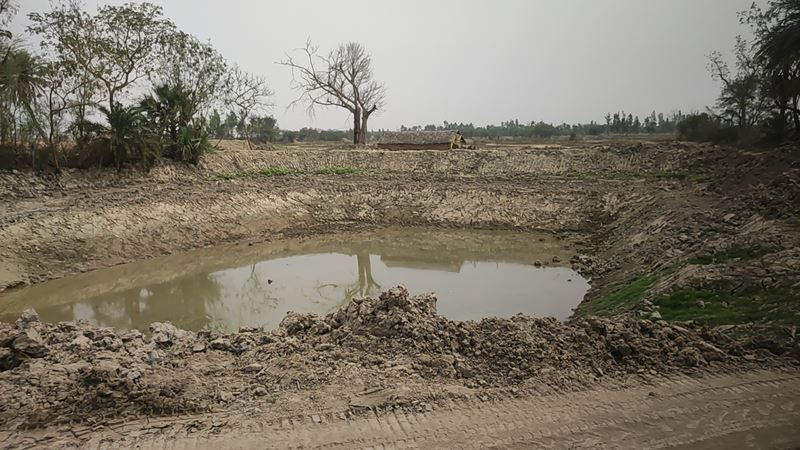
Meanwhile, experts say the construction of concrete embankments is not a solution. “It is a myth that such structures would provide safety to people. Embankments can never be a solution in the Sundarbans as they would get breached and invite more problems. This proposal is without any scientific thought,” Nilanjan Ghosh, director of policy body Observer Research Foundation, Kolkata, told Gaon Connection.
In fact, Ghosh said the “archipelago is not fit for human habitation as vulnerable regions would be under water in the next fifteen to twenty years”.
Fresh water flow has declined due to sedimentation and saline water is replacing it, turning the land salty and leaving it unfit for agriculture. “Communities are already exposed to nature’s fury. The government should focus on strategic retreat and shift them to safer areas,” Ghosh felt.
Tapas is not aware of the larger picture. He just wants a permanent home so that his daughters do not have to defecate in the open, and a strong embankment that will protect them from the next cyclone that might hit the Sundarbans.
Also Read: Gripped by climate change … lives of villagers in Sundarbans remain tragic

